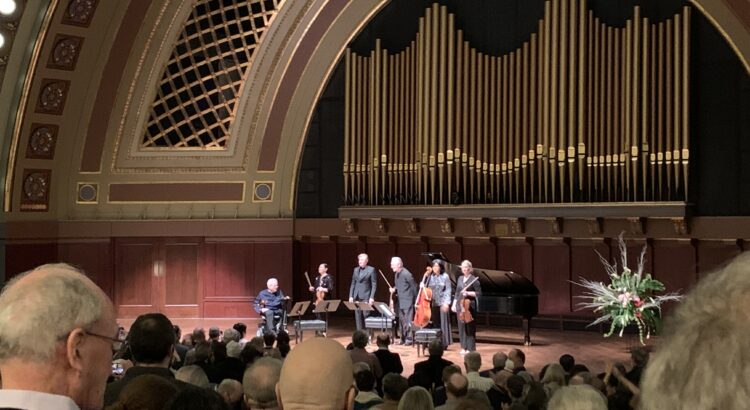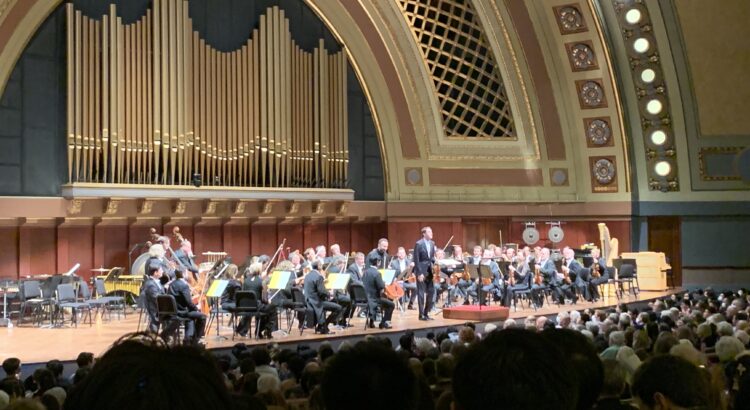Despite having performed at the Michigan Theater several times as part of the Michigan Pops Orchestra, last Saturday was the first time I experienced the stage as an audience member. It is truly a gem on campus–the shining gilded walls, rich carpets, and warm lighting never fail to transport you to a different world. Plus, where else can you hop over to your nearby movie theater to see your local symphony orchestra play live?
On Saturday, March 18th, I had the pleasure of hearing the Ann Arbor Symphony Orchestra perform with violinist and International Tchaikovsky Competition medalist Kyung Sun Lee. Initially drawn in by the promise of Prokofiev’s Violin Concerto No. 2, I was also awarded lovely performances of Dvorak’s Symphony No. 7 and Debussy’s “Prelude to the Afternoon of a Faun”.
The concert opened with “Prelude to the Afternoon of a Faun”, featuring a solo meandering flute that is later joined by mellow horns and shimmery harp runs. Strings provide a soft, dreamy foundation for the woodwind melody to unwind and give the impression of a rolling, natural landscape. The ensemble did a wonderful job of melding sounds together into a cohesive form despite the fluid nature of the piece.
Following Debussy was the highly anticipated Prokofiev Violin Concerto No. 2, performed by Kyung Sun Lee. Lee’s sound was distinctly dark and rich, even through bright double stops and etude-like passages at the beginning of the concerto. The concert program mentioned that she plays a Guanerius violin, which was interesting to evaluate the sound quality live. I could go on and on about why I love this concerto, but here I will specifically highlight the second movement. The delicate violin solo is extremely exposed, both in terms of being octaves above the orchestra bed of lilting triplets and by having a different rhythmic feeling. Lee’s interpretation was a touch faster than what I was used to, but beautiful nonetheless. Because of the awkward rhythmic timing involved, entrances and exits are extremely difficult to place–I felt like the orchestra could have spent a little more time nailing these down with the soloist.
Concluding the concert was Dvorak’s Symphony No. 7. Juicy, triumphant, and distinctly Czech, this work was a pleasure to behold. Even as a somewhat regular classical concert-goer, I have difficulty digesting entire symphonies. However, the parts that definitely grabbed my attention were the second (Poco Adagio) and fourth (Finale Allegro) movements. The Poco Adagio features a rich string melody that gets passed off to the warm brass, while the Finale Allegro is a dark and explosive conclusion to the work.
Overall, I had a wonderful time listening to the Ann Arbor Symphony Orchestra. Looking forward, I hope to keep an eye out for the rest of the season to catch any interesting performances coming up!







